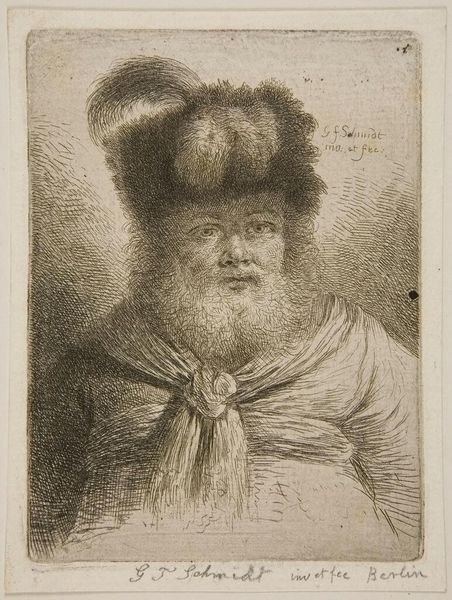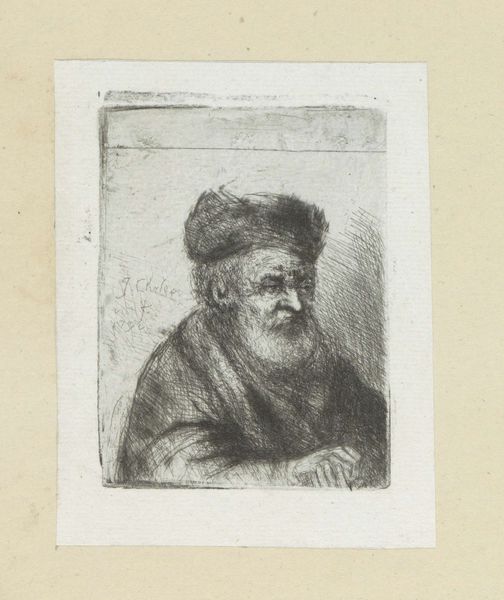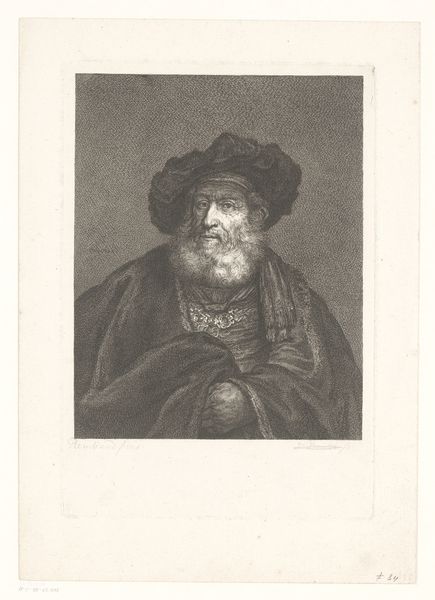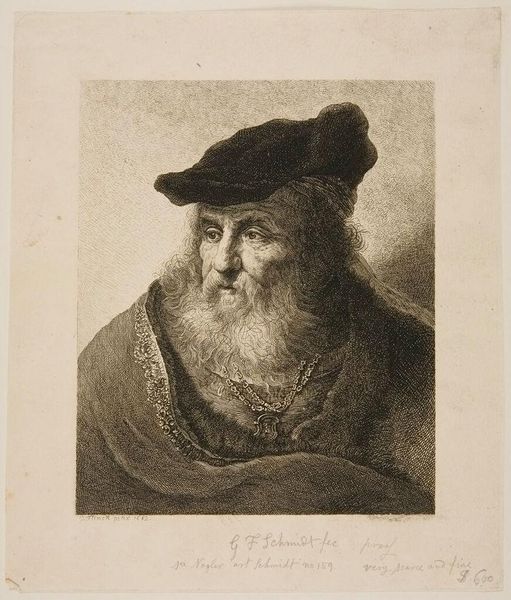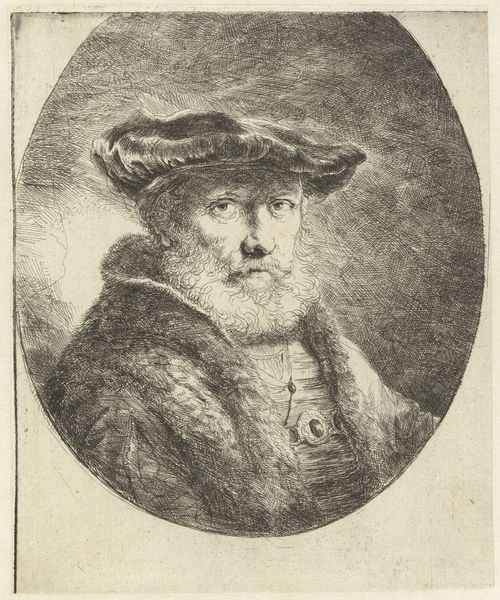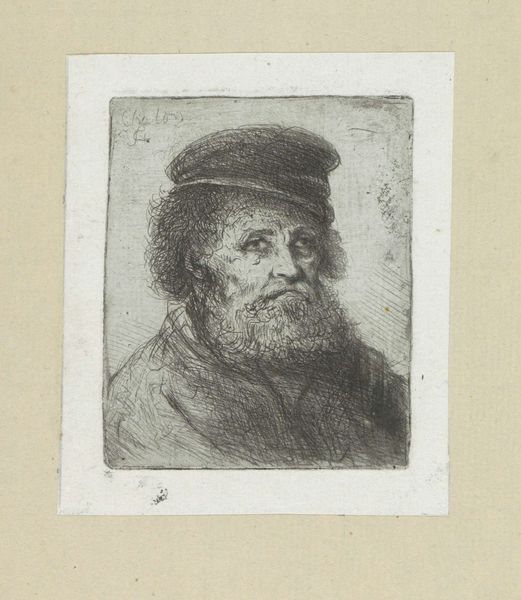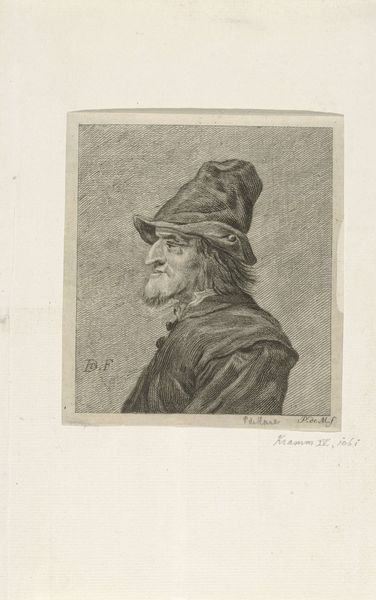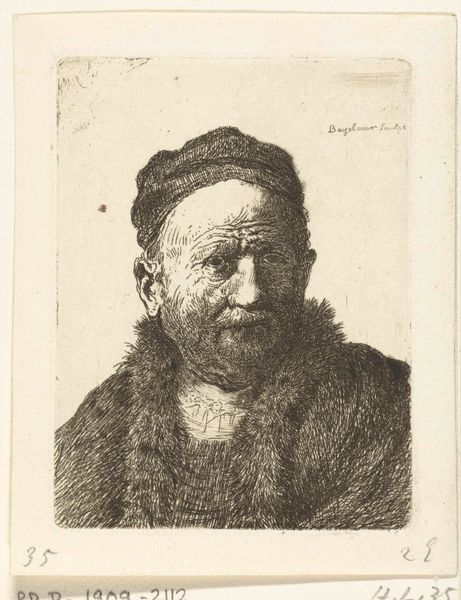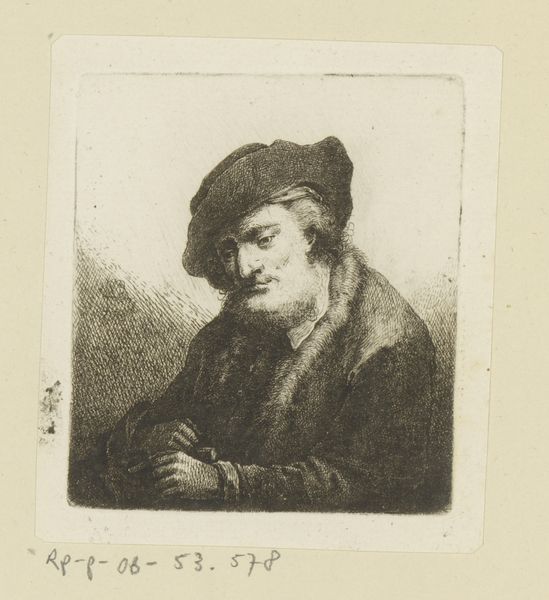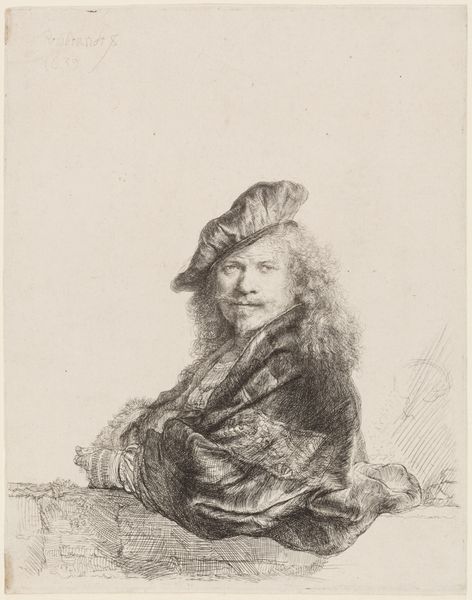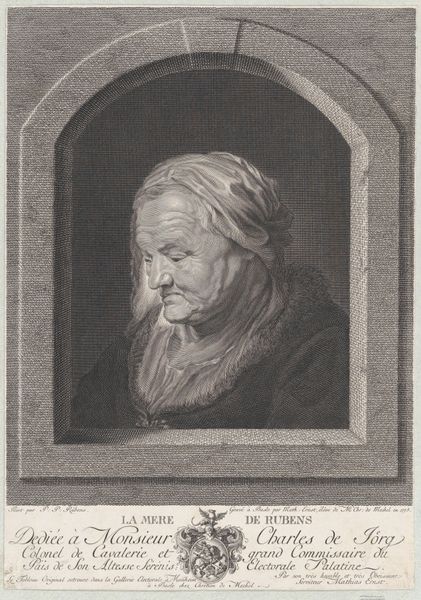
drawing, print, etching, intaglio, paper
#
portrait
#
drawing
#
baroque
#
dutch-golden-age
# print
#
etching
#
intaglio
#
paper
Dimensions: height 139 mm, width 107 mm
Copyright: Rijks Museum: Open Domain
Editor: Here we have "Zittende zware man met hoge muts," or "Seated Heavy Man with Tall Hat," an etching on paper currently housed in the Rijksmuseum. The date is somewhat uncertain, possibly between 1634 and 1808, and the artist is anonymous. The rendering feels almost confrontational. What social statements might be embedded in this piece? Curator: That’s a very insightful way to approach this image. While questions about authorship linger, the very act of depicting this "heavy man" raises questions about power and representation. In a time of strict social hierarchies, who was afforded the privilege of portraiture? Editor: That's fascinating. I hadn’t thought about access and privilege. Was the artist being subversive by depicting someone who may not have typically been considered a worthy subject? Curator: It’s certainly possible. Think about the Dutch Golden Age: the rise of a wealthy merchant class and the shifting power dynamics within society. Does the man appear powerful or… vulnerable? What do his clothes suggest about him, if anything? Is there something unexpected about the work? Editor: Well, he has a rather plain expression and seems stout, which challenges typical heroic depictions, especially considering the luxurious hat he's wearing. But those lines give an air of immediacy to his features... they capture some raw and very human feeling. Curator: Precisely. The use of intaglio allows for nuanced textures, further highlighting the contrast between the man’s features and his adornments, perhaps subtly criticizing societal values that equated material wealth with status. Maybe even questioning masculinity. Editor: I see now! The image goes beyond just portraiture; it acts as a social commentary by prompting the viewer to question conventions. I didn't realize a portrait could be so deeply engaged in social discourse. Curator: Absolutely. And these dialogues with the past help us unpack current assumptions and values about representation. It’s not just a historical piece; it's a mirror reflecting our present-day concerns.
Comments
No comments
Be the first to comment and join the conversation on the ultimate creative platform.
